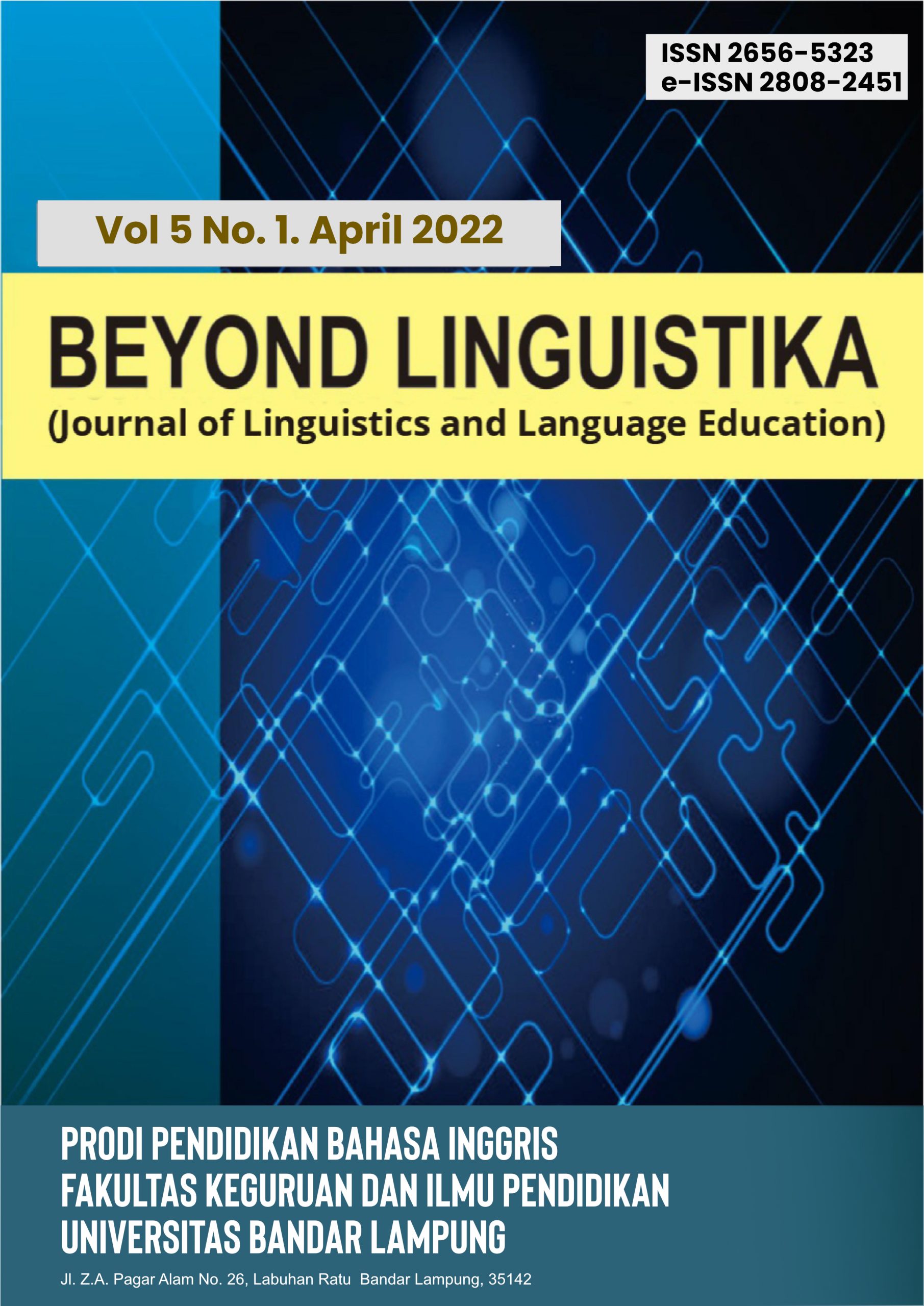A SEMIOTIC ANALYSIS OF K-POP’S SELECTED MUSIC VIDEOS: THE STUDY OF THE KOREAN WAVE AS A GLOBAL PHENOMENON
Abstract
Keywords
Full Text:
PDFReferences
Arikunto, S. (2010). Prosedur Penelitian: Satu Pendekatan Praktik. Jakarta: Rineka Cipta.
Barthes, R. (1977). Elements of semiology (Vol. 4). Macmillan.
Chandler, D. (2007). Semiotics: the basics. Routledge.
Kużelewska, E., & Tomaszuk, M. (2020). European human rights dimension of the online access to cultural heritage in times of the COVID-19 outbreak. International Journal for the Semiotics of Law-Revue internationale de Sémiotique juridique, 1-13.
Mawaddah, B. (2021). A Semiotic Analysis of Minangkabau Culture “Manjapuik Marapulai” (Doctoral dissertation).
Miles, M. B., & Huberman, A. M. (1994). Qualitative data analysis: An expanded sourcebook. sage.
Santos, I., & Marques, L. (2022). South Korea’s Creative Economy: A Case Study on the Hallyu Wave (Korean Wave). E-Revista de Estudos Interculturais, (10).
Sobur, Alex. (2013). Semiotika Komunikasi. Bandung: Remaja Rosdakarya.
Walton, J. (2020). Affective Citizenship and Peripheral Intimacies: Children’s Inter‐ethnic Relations in South Korean Schools. Anthropology & Education Quarterly, 51(2), 195-211.
Wibowo, I. S. (2013). Semiotika Komunikasi. Jakarta: Mitra Wacana Media.
Yakin, H. S. M., & Totu, A. (2014). The semiotic perspectives of Peirce and Saussure: A brief comparative study. Procedia-Social and Behavioral Sciences, 155, 4-8.
DOI: http://dx.doi.org/10.36448/bl.v6i1.3327
Refbacks
- There are currently no refbacks.















